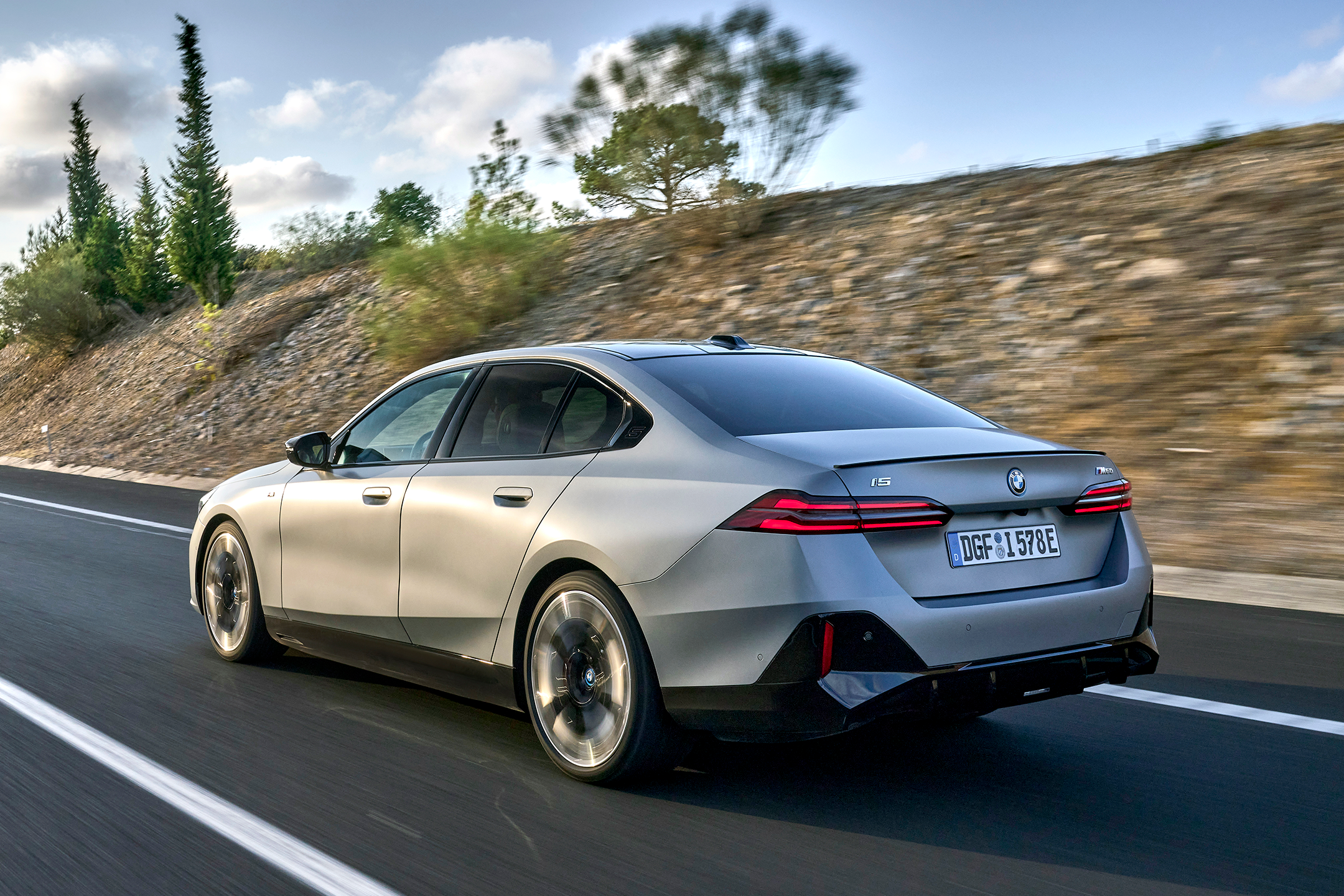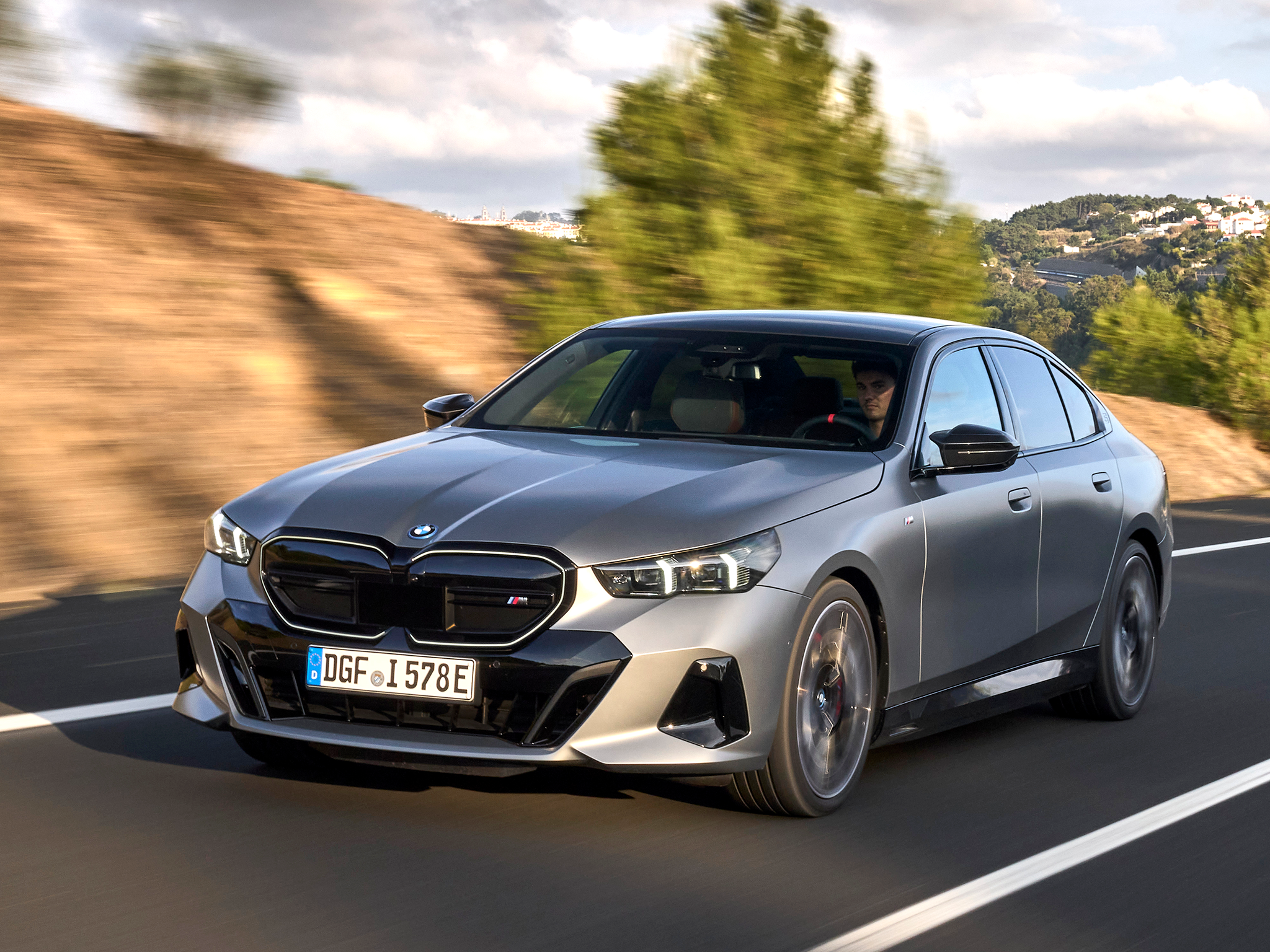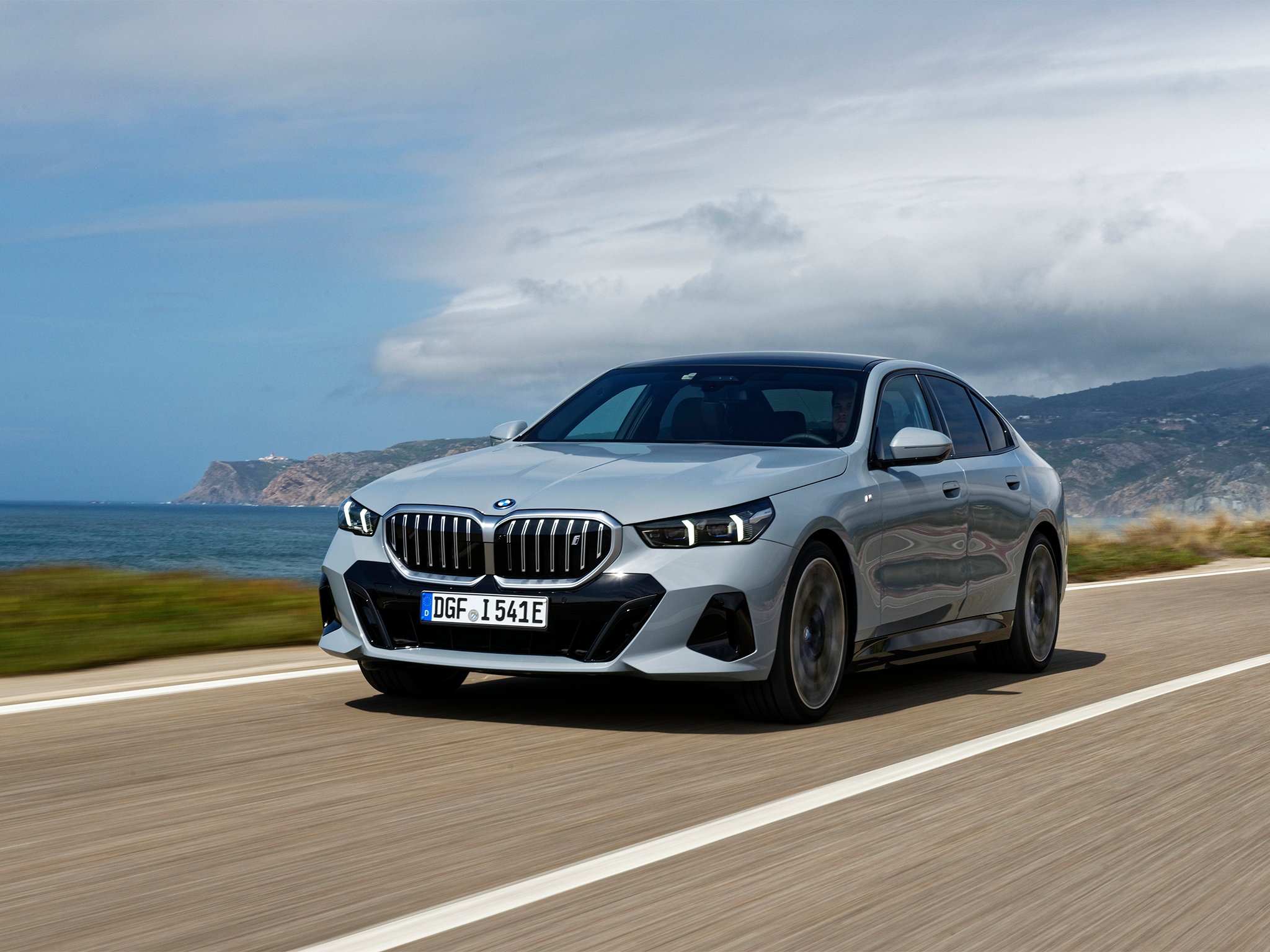BMW i5 review: The electrified saloon lives up to the 5 Series name
The i5 is every inch the electrified version of the 5 Series, from its quality to its performance. You’ll pay handsomely for the privilege though.

The Independent's Electric Vehicles Channel is sponsored by E.ON Next.
The BMW 5 Series has a near-untouchable reputation among executive saloons – it’s long been the standard against which others in the class are judged. In electrified form the i5 doesn’t quite manage that, mostly because it’s a little expensive and can’t quite match its rivals for range or ultimate recharging speed (though more than 200kW charging is still competitive).
That’s not to say BMW has dropped the ball though, because the i5 is otherwise an excellent all-rounder. It performs well in all its guises and comfort and refinement are first-class even against strong opposition, while BMW’s iDrive infotainment setup still works well, even if it’s not always the simplest system to use. In many ways it feels like a scaled-down BMW i7, with a high-tech interior that’s clearly inspired by the larger car, but the i5 retains the sporty feel that buyers have always expected from a 5 Series.
How we tested
I spent a day with both the eDrive40 and M60 xDrive variants of the i5, on the roads around Farnborough. The test took in a mix of motorways – where most i5s are likely to spend their time – but subjected the car to some town traffic and a few country lanes too, which really highlighted the new i5’s substantial size.
BMW i5: From £67,695, BMW.co.uk

Independent rating: 8/10
- Pros: Performance and refinement, comfort, slick in-car tech
- Cons: Range is average, expensive for a 5 Series
- Price range: £67,695 to £97,745
- Battery size: 81.2kWh
- Maximum claimed range: 315 to 354 miles
- Miles per kWh: 3.4 to 3.8
- Maximum charging rate: 205kW
- Charging cost per 100 miles on E.ON Next Drive: £1.76
Battery, range, charging, performance and drive
All i5s get the same battery pack, and on paper it least the big electric saloon uses it well – 81.2kWh of usable capacity yields up to 354 miles in the eDrive40, or 3.8 miles per kilowatt hour efficiency. Figures for the more powerful M60 xDrive – which has 601PS from dual motors, compared to 340PS from the eDrive40 – are 315 miles and 3.4mi/kWh. The reality is you’re likely to get more like 3mi/kWh from even the eDrive40 in mixed driving, for more like 250 miles of real-world range.
Like a lot of BMW electric cars then, range isn’t its strongest suit (though 205kW charging means a quick top-up – 10-80 per cent in around half an hour, or a 100-mile boost in ten minutes), but we have few complaints about performance. Even the eDrive40 will be quick enough for most buyers. It’s easy to meter out the power, and easy to regenerate it again, and the smart recuperation which can coast on motorways but decelerates quicker in town, mostly works well.
You can feel the car’s weight if you’re driving enthusiastically but the i5 is agile for its size and weight, and it really clings on in corners. Considering M Sport suspension and 20-inch wheels, it rides well too on all but the knobbliest road surfaces. Refinement too is truly excellent, even by EV standards.
Interior, practicality and boot space
No complaints about space; the BMW 5 Series, and by extension the i5, is a big car these days and even in the rear seats is getting towards the kind of headroom and legroom you’d expect from a 7 Series. The overall ambience is now much like the modern 7 Series too, with a wide cabin, a large curved screen dominating the dashboard, and wonderfully comfortable seats – albeit mounted lower here, for a sportier feel. Like all BMWs, finding your ideal driving position is easy.
With a 490-litre boot you get 30 litres less volume than in the petrol 5 Series, which itself is 10 litres down on the older car, but you’re unlikely to notice (the 570 litres of the Touring estate is also a little smaller than before) and it’s on par with rivals. One or two slightly cheap-feeling plastic elements aside, the i5’s interior also feels expensive, and well screwed together too. The dashboard is sharply designed but some might find it a little chintzy, though you do get to pick your chosen colour for the mood lighting.

Technology, stereo and infotainment
While not the largest screens on the market, there are still plenty of pixels in front of you in the i5 – the driver display is 12.3 inches, and next to that in the curved panel is a 14.9-inch touchscreen. You can poke your finger at this, but unlike in some smaller BMWs, the company has retained the old iDrive click-wheel on the centre console (here rendered in a crystalline material) which means you can access functions at least partly by feel, rather than long glances at the screen. It works well, though there are a lot of menus to pore through – as an owner, you’d probably settle on just a handful of functions eventually.
Apple CarPlay and Android Auto are standard and the large screen gives them plenty of space when in use, while optional data packages let you, for instance, watch YouTube videos if you’re parked. Touch-sensitive controls for heating and ventilation are less welcome, but BMW’s head-up display is excellent – a large and clear display of all the vital information.
Prices and running costs
An on-the-road price of nearly £68,000 puts the i5 eDrive40 at £17,000 more than a regular petrol 5 Series, though you’re getting a lot more power and efficiency for that. A more relevant comparison though is to other high-end electric saloons, and the i5 doesn’t look quite so expensive alongside the likes of the £87,000 Audi e-tron GT quattro (recently off-sale) or the similarly-priced Porsche Taycan. On the other hand, the recently-updated Taycan offers much more range and a more involving driving experience.
As noted earlier we’d expect a real-world range closer to 250 miles from the i5 eDrive40, which is certainly nothing special in the modern EV market, so like some of BMW’s other electric models, it’s not overly competitive on the bare numbers. Insurance costs are about average for the class – group 43 for an eDrive40, and 49 for the M60. VED and BIK tax rates are both low, as they are with all EVs.
BMW i5 rivals
- Mercedes-Benz EQE
- Tesla Model S
- Porsche Taycan
FAQs
How long does it take to charge?
205kW charging means brisk charge times, especially if you’re only topping up a little – 100 miles in as little as ten minutes, or 30 minutes for a 10-80 per cent charge.
How much does it cost – is it worth it?
Pricing stretches from just under £68,000 to nearly £100,000. None are cheap then, but it feels like better value towards the bottom of the range.
Does BMW replace batteries for free?
BMW offers an eight-year, or 100,000 mile (whichever comes first) warranty on its battery packs, and this warranty should cover any major costs with the pack during this time.
The verdict: BMW i5
In most respects the i5 is the complete package the BMW 5 Series has always been, with excellent refinement and build quality, strong performance in all the ways that matter, top-tier tech, and plenty of road presence. Despite quick charging though the range is a little disappointing, especially given the substantial price jump over petrol versions.






Join our commenting forum
Join thought-provoking conversations, follow other Independent readers and see their replies
Comments